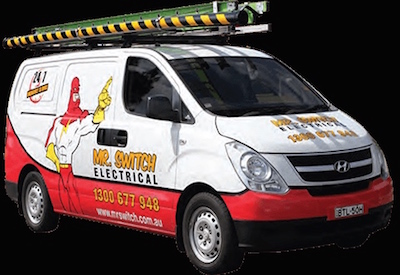4 Tips for a Well Organized Service Vehicle

July 23, 2018
By Owen Hurst
For electricians, working out of a service vehicle is simply part of daily operations. In northern Canada there are even electricians who provide fly-in services, making the need to ensure you have all the tools and required electrical components on board even more essential. Whether working out of a van or truck in a local area or flying deep into the Canadian interior, proper organization of equipment and supplies makes doing jobs easier and faster.
With the rise of social media many electricians now share images of their service vehicles on sites like Pinterest and in dedicated electrical groups on Facebook and Twitter. This speaks to a pride not only in the work they perform but in how they conduct themselves as electricians. Not to mention that the look and care you put into your service vehicle can influence your clients, as a clean and organized workspace can provide a sense of reassurance to those who are placing the safety of their home or business in your hands.
With this month’s focus on tools (trucks and mobility), EIN has four tips to ensure your service vehicle is organized and stays that way.
1. Maintain the outside of your vehicle as well as the inside
Initial impressions can have a significant impact in the minds of clients and potential customers, and your service vehicle is often the first image of you they get. It also serves as a mobile billboard. For this reason, keep the exterior of your vehicle maintained and clean. If your vehicle is dented, rusty or just plain dirty, the poor impression this creates can easily transfer over to considerations about the potential quality of your work and the care you will take when working within people’s homes.
2. Have separation between the front and back of house
The term may be borrowed from the restaurant industry, but it is one I have heard before by many referring to their service vehicles. With all the things packed into your vehicle it is only logical to separate your tools and supplies from your paperwork (service guides, pricing guides, manuals) and things like laptops or tablets. Essentially treat the front of your vehicle like your office and the back as your shop/warehouse. The separation will allow better organization and ensure that you aren’t rummaging through the back of your vehicle for something as simple as a price guide, particularly if you are under the eye of a potential customer.
3. Have a clear organizational strategy for tools and supplies
We have all seen pictures of service vehicles (or perhaps your own) that have tools and supplies simply thrown in a haphazard manner. Operating in this way wastes time as you sift through your vehicle looking for that rarely needed tool or supply or can very easily cause damage to your equipment as you drive around on the smooth, flat roads of Canada. By implementing a clear organizational strategy for your vehicle, you can be sure to know exactly where all your tools and supplies are and that tools aren’t bouncing around in the back.
Here are two best practices that can easily be applied if you are one that has difficulty keeping your vehicle organized:
• institute specific zones in your vehicle (i.e., Zone 1 – hand tools/ Zone 2 – Specialty tools/ Zone 3 – Electrical components/ Zone 4 – Wire and Cable…). By mapping your vehicle in this manner, you will always know where every tool and supply you need is and will optimize your time. Plus, any customer that sees your organized vehicle will feel confident that you will treat their project and home with the same respect you do your equipment.
• use organizational software, many of which now operate through an app on your phone. For this you can go so far as to organize all your equipment and supplies into bins with QR codes on the exterior. By simply scanning the QR code, your device will let you know what is in that box. Where this tool can become very helpful is through monitoring your supply numbers. So long as you update the information as you use supplies it can keep a running total of what you have onboard and let you know when you are getting low on any one item.
Regardless of method ensuring your vehicle is organized is extremely beneficial. The trick is to take time at the end of each day to ensure everything makes its way back to its proper place and isn’t thrown in the back in your rush to get home.
4. Security
Far too often I hear of electricians losing all their tools because their vehicle was broken into. So be sure to always lock your vehicle, use multiple locks if possible, park in well lit areas, and consider installing a security system. Your tools are worth it.
Owen Hurst is Managing Editor of EIN’s sister publication, Panel Builder & Systems Integrator: http://panelbuildersystemsintegrator.ca
Photo source: www.mrswitch.com.au




![Guide to the Canadian Electrical Code, Part 1[i] – A Road Map: Section 52 — Diagnostic imaging installations](https://electricalindustry.ca/wp-content/uploads/2022/11/Guide-CE-Code-2-768x432.png)





![Guide to the Canadian Electrical Code, Part 1[i] – A Road Map: Section 52 — Diagnostic imaging installations](https://electricalindustry.ca/wp-content/uploads/2022/11/Guide-CE-Code-2.png)






